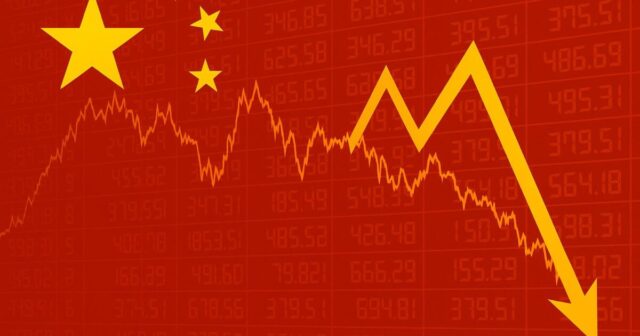This story originally was published by Real Clear Wire
Tariffs are back in the news because President Trump is threatening another hike—but this time it isn’t trade-war theater. The fight has moved from spreadsheets to surge capacity, from the price of toys and textiles to the heart of hard power. Beijing has tightened the tourniqueton strategic minerals and the know-how that turns them into combat capability: rare-earth oxides and magnet inputs, battery-grade graphite, and the processing tools and licenses that govern them. Washington’s tariff move is therefore not about revenue; it’s about readiness—production timelines, ramp rates, and the ability to surge output when missiles start to fly. It’s about the balance of power in an era of great-power competition. It’s about survival.
That shift in focus matters because Beijing isn’t revealing something new; it’s scaling up the control mechanisms already in its toolkit. By expanding export licensing, walling off separation and magnet-making technologies, and extending jurisdiction to foreign-produced goods that contain Chinese content, China is translating market share into leverage. These are not bureaucratic footnotes. They are targeted constraints on the materials inside precision-guided munitions, AESA radars, aircraft actuators, electric drives, and undersea systems—sending a blunt message to Western industry: your production tempo depends on our paperwork.
The sequence is clear. In 2023, Beijing released licenses for gallium and germanium and began permit review of natural and synthetic graphite. In late December of that year, it also banned exports of rare-earth extraction, separation, and magnet-making technologies. This autumn it moved again—tightening license requirements for recycling and magnet-adjacent equipment, adding case-by-case scrutiny for semiconductor-linked uses, and signaling that all applications tied to foreign military end-uses will be largely denied. Crucially, the new measures capture not only materials but the technology and tooling that process them, and they can apply to foreign-produced magnets that incorporate Chinese content or Chinese-origin know-how (an FDPR-style rule set). Mineral statecraft is the point: weaponize chokepoints, slow relocation outside China, and convert processing dominance into bargaining power—especially where it touches Western rearmament schedules.
The near-term impact lands where the West is most exposed: time. Rare-earth and graphite chains are time-critical, not merely price-sensitive. Licenses that stretch from days to weeks ripple into missed ramp rates for programs that depend on heavy rare-earth oxides and NdFeB magnets—smart munitions, AESA radars, drive motors, targeting lasers, and quiet undersea systems. Controls on processing tools and technical assistance slow commissioning of non-Chinese plants and trap working capital in safety stock. Even modest delays at separation, metal-making, or magnetizing steps can stall rearmament just when it needs to accelerate. That is the seam Beijing is squeezing: impose schedule risk, erode trust, and remind everyone that “resilience” is merely rhetoric unless factories actually produce.
Yet strategies built on chokepoints also broadcast their antidote. Pressure concentrates minds. Washington and close allies are moving “resilience” from slogan to capacity—mine-to-magnet ecosystems backed by public capital, long-dated offtakes, and procurement that commits to volume over time. Defense authorities are funding oxide recovery, metal and alloy output, and domestic magnet lines; multi-year buys are beginning to align with those buildouts; and recycling is turning industrial scrap and e-waste into supplemental feedstock. Not every project will hit its mark, but each commissioning dulls the leverage of any single export license.
Tariffs fit here as accelerants.
On their own, tariffs won’t conjure magnets. Coupled to defense demand and real offtakes, they penalize clinging to brittle supply lines while buying time for North American capacity to scale. The point isn’t protection for its own sake; it’s a tempo change. If tariffs raise the cost of dependence at the precise moment new capacity needs anchor customers, substitution speeds up—and bargaining power shifts with it. That is how trade tools, used narrowly and instrumentally, support deterrence.
North America is the backbone of this shift because it can field the full ladder—from ore to oriented magnets—and then embed those materials in combat-credible platforms. In the United States, permitting accelerators, export-finance tools, and Defense Production Actawards are dragging graphite, rare earths, and magnet capacity from slide decks to shop floors. In Canada, a serious federal push on critical minerals, enabling infrastructure, and cross-border alignment is turning geology into strategy. The logic is continental: a shared market, complementary resource bases, and common security incentives that compound rather than compete.
Graphite shows the playbook in miniature. Beijing’s permit regime in 2023—and the extensions announced this fall—made batteries and unmanned systems fair game. The reply is straightforward: accelerate an Alaska-to-anode chain, fast-track permits, pair credit support with long-dated offtakes, and stand up domestic anode output that feeds military demand when trade winds shift. The same logic applies to heavy rare earths and magnet alloys: diversify ore sources, master separation at home, stand up the metal-and-magnet steps domestically, and use recycling to smooth spikes. None of this is glamorous. All of it converts “supply-chain security” into steel, wire, and powder—the mundane stuff that determines whether deterrence is credible on a bad day.
Magnets are the other hinge. Without domestic NdFeB capacity, every ramp for precision weapons, electric drives, or actuators runs through a foreign choke. That is changing. Policy support and committed demand are underwriting U.S. magnet plants, while defense contracts expand permanent-magnet production for national-security use. Some projects will slip; others will quietly change the map. What matters is direction and pace: as commissioning stacks up, the coalition’s freedom of action grows.
Critics warn, not wrongly, that coupling tariffs to defense production carries near-term pain—higher costs, reshoring friction, and the inevitable learning curves of rebuilding industrial steps long outsourced. That pain is real. It is also the price of regaining freedom of action in a world where supply chains are part of the battlespace. Strategy is choosing which pain you take and when. Taking it early, on terms that build durable capacity with trusted partners, beats swallowing it later on crisis timelines set in Beijing.
The deeper point is that control in this competition is a moving frontier. Today’s leverage rests on processing dominance and embedded know-how. Tomorrow’s leverage will rest on how quickly countries adapt, commission, and commit. If the United States and Canada keep translating permits into plants and memoranda into magnets—while tariffs and procurement synchronize incentives—the near term may sting, but the long term bends away from vulnerability. That bend is the ballgame, because it shifts bargaining power from a rival’s license desk to our own industrial spine.
Read this way, President Trump’s tariff threat is not a noisy sideshow. It is one tool in a larger strategy to break a tightening grip on the materials that make modern militaries work. Used narrowly and tied to clear defense outcomes, it punishes dependence while the alternative is built. Beijing’s mineral statecraft is rational and, for a while, effective. But by making the cost of dependence immediate and visible, it is accelerating the very diversification that will dilute its power. In a long contest measured by adaptation rates, the winner is the coalition that gets to “good enough at scale” first—and keeps going. The task before North America is to turn resolve into throughput, and rhetoric about resilience into the metal, magnets, and anodes that make deterrence real.
Andrew Latham, Ph.D., a tenured professor at Macalester College in Saint Paul, Minnesota. He is also a Senior Washington Fellow with the Institute for Peace and Diplomacy in Ottawa and a non-resident fellow with Defense Priorities, a think tank in Washington, D.C.
This article was originally published by RealClearDefense and made available via RealClearWire.











